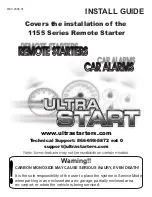
14
Know Your Frequency
Based on the size and weight of the plane it’s typically considered to be a ‘park flyer’
class model. As a result it’s best to fly the plane at a local park, schoolyard, flying
field or other area that’s large enough and free of people and obstructions. We rec-
ommend an area the size of at least one football/ soccer field, however, even larger
areas are better suited and preferred especially when learning how to fly.
DO NOT
fly in parking lots, crowded neighborhood areas or in areas that are not free
of people and obstructions.
We also suggest flying over grass as it’s
a much more forgiving surface that
causes less damage in the unfortunate
event of a crash. Short grass is better
for takeoffs and landings as grass
that is too long can cause the airpla-
ne to nose-over /flip and be damaged.
An ideal flying area allows for takeoffs
and landings on a smoother surface
(such as asphalt) and flying over grass.
PLEASE NOTE: The plane is designed to be flown outdoors only.
Flying Conditions
It’s typically best to fly on days that are calm with no wind, especially when learning
how to fly. We strongly suggest flying only in calm conditions until you’re familiar with
the controls and handling of the model. Even light winds can make it much more di-
fficult to learn to fly, and in some cases can even carry the model beyond your line
of sight.
Never fly the plane near Highway,
railway, high tension line, crowed
people,
Flying Area,
and residential
area.
Fly in spacious ground without
obstacles and boscage.








































